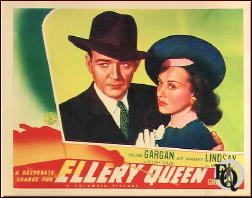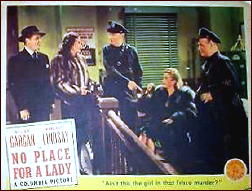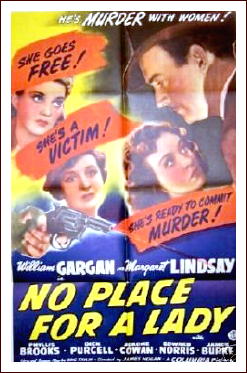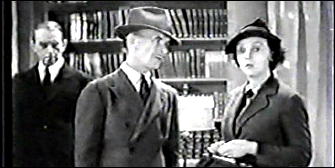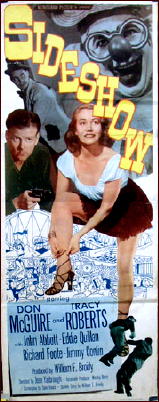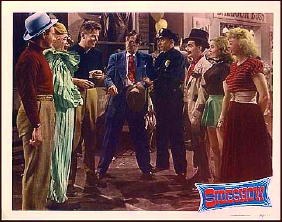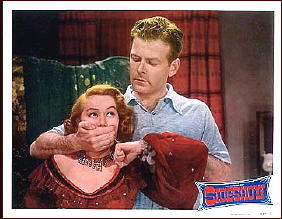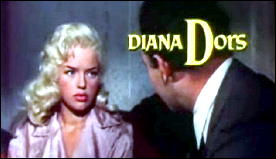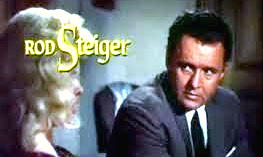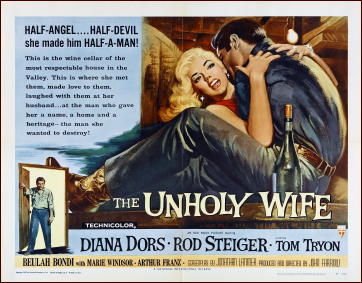Reviewed by DAVID L. VINEYARD:
PETER GUNN. Pilot: “The Kill.” NBC-TV, 22 September 1958. Craig Stevens, Lola Albright, Hershel Bernardi, Hope Emerson. Guests: Gavin McLeod, Jack Weston. Written & directed by Blake Edwards. [The series: 1958-1960, NBC; 1960-1961, ABC.]

GUNN. Paramount Pictures, 1967. Craig Stevens, Laura Devon, Ed Asner, Sherry Jackson, Albert Paulson, M.T. Marshall, Helen Traubel, J. Pat O’Malley, Regis Toomey. Screenplay by Blake Edwards & William Peter Blatty. Directed by Blake Edwards.
PETER GUNN. TV-movie/pilot, ABC, 22 September 1958. Peter Strauss, Barbara Williams, Peter Jurasik, Pearl Bailey, Charles Cioffi, Jennifer Edwards. Written & directed by Blake Edwards.
Lt. Jacobi: Pete, I’ll go after you as fast as I go after Fallon (Fusco).
Peter Gunn: Then I have nothing to worry about. (Gunn walks away.)
Lt. Jacobi to Edie: Can’t you do something?
Edie: Sure. What would you like me to sing?
Some ideas are just too good for one telling. Roy Huggins novella “Appointment with Fear,” a Stuart Bailey private eye tale, was the basis for the films The Good Humor Man and “State Secret,” the pilot for 77 Sunset Strip (and at least two episodes), and the pilot for City of Angels. So Blake Edwards, with variations, used “The Kill,” the pilot for Peter Gunn, as the basis for the 1967 feature film and the 1989 refit with Peter Strauss.

The basic story, as outlined in “The Kill,” is that an aging gangster is killed by two assassins dressed as cops in a phony cop car. Peter Gunn owed the old time mobster his life and won’t leave his death alone.
An ambitious gangster (Gavin McLeod — called Fallon here, Fusco in the movie) wants to take over and blows up Mother’s, the jazz bar run by Hope Emerson where Peter Gunn’s chanteuse girlfriend Edie sings, as an example of how his extortion racket will work. Gunn figures it out, puts pressure on Fallon’s top man (Jack Weston) and sets him up as a target for the two phony cops.
It wasn’t as if borrowing was new to Blake Edwards. He began his career creating singing detective Richard Diamond for Dick Powell on radio, then moved into screenplays and television. He updated Richard Diamond as a smooth non-singing private eye played by David Janssen for television, then he also wrote and directed a pilot with Brian Keith for a Mike Hammer series.
Peter Gunn was very much a cross between the cool hip buttoned down and laid back Richard Diamond and the tough violent jazz themed world of Mike Hammer.
Peter Gunn, for the uninitiated, is a private eye in a riverfront town that is never named but always seems a bit wet and foggy. He operates out of Mother’s, a smoky bar where his girl friend Edie is the singer, and he stands at the bar and exchanges hip humor with the owner, Mother. His chief ally on the police force is Lt. Jacobi, a human, dogged, world weary policeman.

Peter is aided by a small army of informers and snitches, all colorful, eccentric, and prone to theatrics. The closest literary equivalent to Peter Gunn was likely Henry Kane’s Peter Chambers who has a similar jazzy offbeat quality — and ironically (or not), Kane wrote the only novelization of the television series.
To add to the cool dialogue, complex plots, and moody noirish look the series was blessed with perhaps the most recognizable theme in television history, Henry Mancini’s Peter Gunn theme.
What the Monty Norman/James Bond theme is to spy fiction, the Gunn theme is to crime. It is simply unforgettable (little wonder, in addition to Mancini, at the time his orchestra included legendary John Williams.) Even people who never heard of Peter Gunn know that iconic theme.
One more element came into play: perfect casting. If there was a better choice than Craig Stevens to play Peter Gunn I can’t imagine him. Stevens was a minor B-actor whose biggest role was probably that of a shell shocked soldier in Since You Went Away and by the time of Peter Gunn had fallen to appearing in films like The Preying Mantis and Abbot and Costello Meet Dr. Jekyll and Mr. Hyde.
Just before Peter Gunn he had an outstanding role as a cool gun man in Budd Boetticher’s Buchanan Rides Alone, which may well have led to his being cast as Gunn. For whatever reason, he took the part and ran with it. The result was like seeing Mike Hammer played by Cary Grant. It is simply one of the most iconic roles in television history, on a level with Lucy and Raymond Burr’s Perry Mason.

Craig Stevens is Peter Gunn. Much of the character and mood established with nothing more than a raised eyebrow or a his cat like walk. Craig Stevens is Peter Gunn the way Sean Connery was James Bond or Basil Rathbone Sherlock Holmes.
For American audiences, Peter Gunn and Stevens were the transition from Mike Hammer to James Bond.
The rest of the cast included Lola Albright as the sexy somewhat melancholy Edie who knows her man is only her man in a limited way:
Edie: Is it true what they say about you? Pete, gun for hire?”
Peter: True.
Edie: I’ve saved up. What say I buy you — a steak.
Hershel Bernardi was cast as Lt. Jacobi the world weary cop and veteran Hope Emerson was Mother, an imposing presence even on the small screen. Veteran character actors like J. Pat O’Malley and Regis Toomey were semi regulars as colorful informers.

The series ran only three seasons on NBC and then ABC. When it went off the air it found new life in syndication, and in 1967 Edwards decided to try again as a feature film. Stevens was back, but Lola Albright was replaced by Laura Devon as a rather wan Edie. Ed Asner was good as a tougher version of Jacobi and Helen Traubel played Mother. O’Malley and Toomey again appeared as informers.
The plot was expanded from “The Kill” with some fine variations — at least one borrowed from Mickey Spillane’s Vengeance is Mine. Albert Paulson was “Fusco,” the Fallon character from the pilot, M. T. Marshall had a standout role as Daisy Jane, a madam who ran a floating whorehouse, and Sherry Jackson appeared as a beautiful and mysterious kook who shows up naked in Gunn’s bed.
Gunn (finding Sherry Jackson naked in his bed): Collecting for the Heart Fund?
Sherry Jackson: No.
Gunn: Girl Scouts?
Jackson: No.
Gunn: Community …?
Jackson: That’s the one.
Gunn: I gave at the office.

The world had changed in six years though Gunn hadn’t, and the whole thing is faintly anachronistic, but it is done with such style that hardly matters. It’s a superior effort all around, with at least three outstanding set pieces, including a shoot out in a mirrored bedroom, a confrontation on a racket ball court (taken in part from “The Kill”), and the finale, a bloody brawl that may well be one of the most violent scenes filmed to that time.
Craig Stevens commands the big screen as he did the small one, but the time for Gunn was gone and though it did well, the critics weren’t kind and Gunn disappeared again. Stevens had several other series that ran varying lengths of time — Man of the World, Mr. Broadway, The Invisible Man, did a pilot for a “Thin Man” series, Nick and Nora (notoriously bad), and probably had his last big role in Edward’s S.O.B.
By 1989 Blake Edwards had moved onto bigger things, but he trotted out Peter Gunn yet again with a new actor in the role, Peter Strauss, then still fresh off his star-making role in Rich Man, Poor Man.

Again a gangster has been killed and a gang war threatens. Peter Gunn caught in the middle has to find the killers and stop the bloodshed.
As a private eye film this is not bad, but as Peter Gunn it just isn’t right.
Strauss makes his first appearance in a dinner jacket with a white silk scarf and looks like Michael J. Fox wearing his father’s suit. Edie has almost nothing to do and is largely replaced by a scatterbrained secretary (in the original series Mother’s was Pete’s office) who has far too much screen time. Peter Jurasik plays Jacobi as a petulant and cynical typical cop. Pearl Bailey has little to do as Mother.
Frankly it’s all tired and hackneyed. Not bad, but not Peter Gunn, not by a long sight. Peter Gunn in a turtle neck just didn’t fit somehow. That said, the film has it’s moments, with a nice variation on the shootout from The Big Sleep at the end. One nice touch, Lt. Jacobi acquires a first name — Hershel.

Strauss might have been good as a private eye. Just not Peter Gunn. As made for television private eye films go, this isn’t bad. If you had never seen Craig Stevens and the original you might even have been impressed.
But it’s Diet Coke, not the Real Thing.
The plot varies even more from “The Kill” than Gunn did, but there are enough similarities you won’t have any trouble recognizing where the idea came from. Charles Cioffi is the gangster this time.
In the years since Peter Gunn projects have come and gone. John Woo had one at one point. It would be nice if by some miracle everything came together and we got one more great Peter Gunn, but it seems unlikely. Gunn is very much of its time, an attitude, an actor, and a handful of people he interacted with, and very much one of the best themes ever written, bar none.
Not that we will be, but perhaps, just this once, we should be grateful for what we have.



